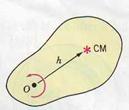
КАТЕГОРИИ:
Архитектура-(3434)Астрономия-(809)Биология-(7483)Биотехнологии-(1457)Военное дело-(14632)Высокие технологии-(1363)География-(913)Геология-(1438)Государство-(451)Демография-(1065)Дом-(47672)Журналистика и СМИ-(912)Изобретательство-(14524)Иностранные языки-(4268)Информатика-(17799)Искусство-(1338)История-(13644)Компьютеры-(11121)Косметика-(55)Кулинария-(373)Культура-(8427)Лингвистика-(374)Литература-(1642)Маркетинг-(23702)Математика-(16968)Машиностроение-(1700)Медицина-(12668)Менеджмент-(24684)Механика-(15423)Науковедение-(506)Образование-(11852)Охрана труда-(3308)Педагогика-(5571)Полиграфия-(1312)Политика-(7869)Право-(5454)Приборостроение-(1369)Программирование-(2801)Производство-(97182)Промышленность-(8706)Психология-(18388)Религия-(3217)Связь-(10668)Сельское хозяйство-(299)Социология-(6455)Спорт-(42831)Строительство-(4793)Торговля-(5050)Транспорт-(2929)Туризм-(1568)Физика-(3942)Философия-(17015)Финансы-(26596)Химия-(22929)Экология-(12095)Экономика-(9961)Электроника-(8441)Электротехника-(4623)Энергетика-(12629)Юриспруденция-(1492)Ядерная техника-(1748)
Exercise
|
|
|
|
Figure 6.2 shows a cylinder, a disk, and a thin ring, all of the same mass. In each case the axis of rotation is indicated. The radii (or radiuses) of the disk and the ring are the same. In the case of the cylinder, all its particles are close to the axis, so the r i are small. In comparison, the particles of the disk are spread out to larger distances from the axis. Without any calculation we may conclude that IA< IB. Whereas the mass of the disk is uniformly spread out, all the particles of the ring are at the maximum possible distance from the axis. Consequently, IB < IC.
Figure 6.3 shows a rigid body rotating with angular velocity ω about an axis that is located at a perpendicular distance h from the CM. Kinetic energy of the body has two terms, K = K CM+ K rel. The first term, К CM, is the kinetic energy associated with the motion of the CM, and K rel is the kinetic energy of motion relative to the CM. The angular velocity of a rotating body is the same about any point on it. In particular, although the body is rotating about О, the angular velocity about the CM is also ω. Therefore, the total kinetic energy of a body rotating about an axis fixed in direction is

|
| FIGURE 6.3 |
K = K CM + K rel
or
 (6.2)
(6.2)
From Eq. 11.5,  , and so
, and so  . The total kinetic energy
. The total kinetic energy
becomes  . This may be expressed as
. This may be expressed as  where
where
 (11.16) (11.16)
| Parallel axis theorem |
This relationship, called the parallel axis theorem, relates the moment of inertia I about any axis to the moment of inertia I CM about a parallel axis through the CM. This result is very helpful since it is often easier to evaluate the moment of inertia about the CM.
|
|
|
|
|
Дата добавления: 2014-01-05; Просмотров: 353; Нарушение авторских прав?; Мы поможем в написании вашей работы!